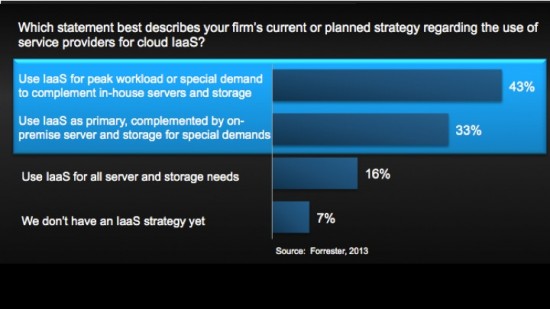In this series of articles I’ll articulate the challenges customers face in hybrid cloud adoption, the key hybrid cloud requirements and ways to address them.
Organizations are trying to transform their business and innovate faster by getting access to resources on-demand per business needs but enterprise IT has not been able to provide that. This has led to a new challenge of “shadow IT” – employees going direct to the public cloud to get fast and easy access to resources by going around IT. Shadow IT proves that business users are looking for the flexibility of cloud, but IT is wary of public cloud due to associated concerns of security, loss of visibility and control.
Hybrid cloud enables organizations to innovate faster by enabling rapid, self-service provisioning of resources, with the choice to deploy workloads in enterprise’s own data center or in the public cloud in a pay-as-you-go and scaled out manner. Hybrid clouds enable multiple use cases such as dev/test, capacity augmentation and disaster recovery besides control of Shadow IT. There is an increased trend towards hybrid cloud as it offers flexibility to respond quickly to business needs and allows reduction in cost. As per Forrester, more then 70% of enterprises plan to complement their in-house server and storage resources with IaaS resources from public cloud providers for primary or peak workloads. This points to the fact that customers want Hybrid Clouds, not just private or IaaS public clouds.

While we see the advantages of hybrid cloud, we don’t see large-scale customer adoption yet. The factors that have been preventing this are
– No easy way to deploy and manage on-premise and public cloud resources through a single-console.
– Lack of security for workloads running in public cloud and unsecure connectivity from private to public cloud.
– Slow and complex management processes such as need to re-architect the application while migrating workloads across hybrid cloud.
Customers are also concerned about getting locked-in to a particular vendor’s solution or a particular public cloud. Today one particular public cloud may be right for certain class of applications but tomorrow another public cloud provider may offer better SLAs, cost or application performance. There are some fragmented solutions that allow migrating workloads from customer’s private cloud to a public cloud but then there is no easy way for the workloads to move back to enterprise or migrate easily to another public cloud. Customers have seen that with such solutions neither they get the complete agility nor the long term cost benefits. As a result, they are weary of getting locked-in to a particular public cloud or a solution that works only across a single hypervisor or over a certain compute, network or storage device.
Customers are looking at true hybrid cloud capabilities that means more than just running some applications on-premises and some in the public cloud. “Hybrid” clouds require a functional extension of local resources to the cloud to the same degree that local resources are connected/integrated. Lets look at the key customer requirements of a true hybrid cloud:
- Self-service access: A true hybrid solution will provide self-service portal to users and IT admins. It will enable users to seamlessly deploy applications both on-premise or in the public cloud from a unified console. It will allow IT admins to manage workloads from a single pane of glass and enforce complete security for workloads in multi-tenant shared public cloud as private cloud.
- Workload portability: It will offer bi-directional migration of workloads from private to public cloud independent of the underlying architecture.
- IT as a broker: It will enable IT to act as a broker on behalf of Line of business while minimizing risk by enforcing that application network and security policies are identical regardless of the location of the workloads.
- Open architecture: It will enable choice and flexibility for users, IT admins and cloud service providers by being based on Open APIs and architecture. It will allow users flexibility in workload sourcing options without getting locked-in to a particular public cloud or vendor solution. It will enable service providers to rapidly offer a hybrid cloud solution.
We believe that an open and as easy-to-use approach is essential to delivering real hybrid cloud capabilities and help transform the way IT services are delivered. With such an approach; IT will not have to live in the shadows of “Shadow IT” rather can act as a broker of cloud services for LOBs. As the above requirements are addressed, we will increasingly see organizations taking a hybrid approach to cloud.
I specifically find IT brokering function very interesting and something IT organization are going to adopt going forward. There are too many factor that IT has to deal like Shadow IT, sla management and public cloud portfolio. The hybrud cloud killer app cloud be the broker pieces.
Thanks Kapil. We definitely see that IT wants to act as a partner to LOBs on their journey to hybrid cloud adoption though IT teams face certain challenges such as the need to manage distinct private and public lcouds .
Dont you feel the the self-service access is really a bifurcated set of capabilities and tools? One for the end-user and the other for IT governance? If so, an entire series in this blog could cover those tools that compare and contrast the cloud service brokers.
Hi Sutapa
Is Cisco’s intercloud solution similar to service offered by Cloud management companies like Rightscale that allows workloads to move between Public and Private clouds?
Thanks
Sreenivas